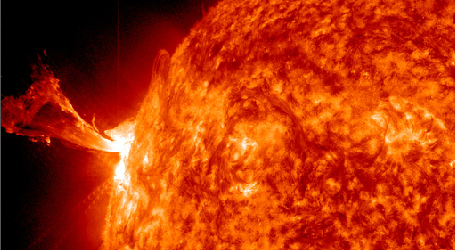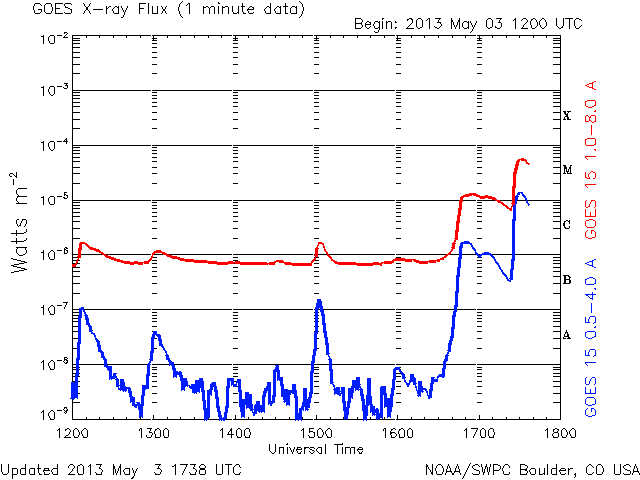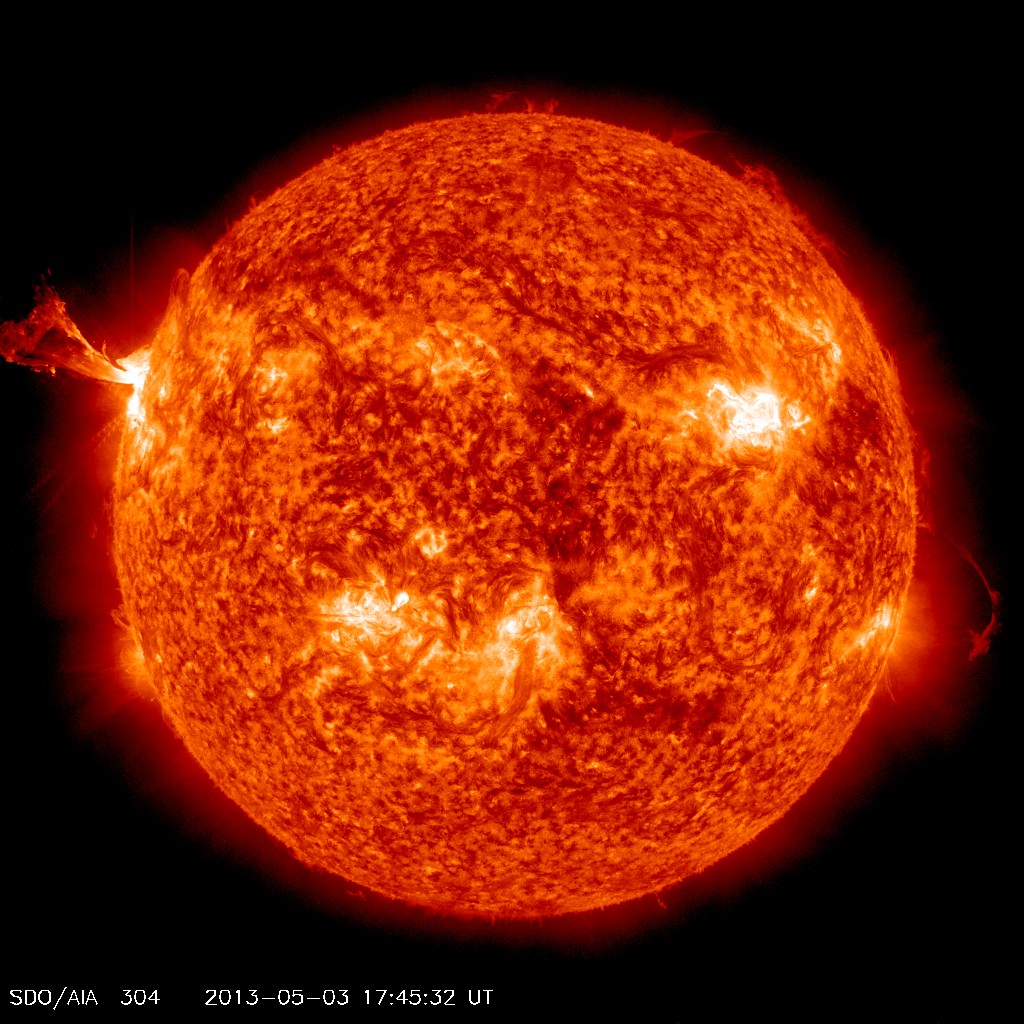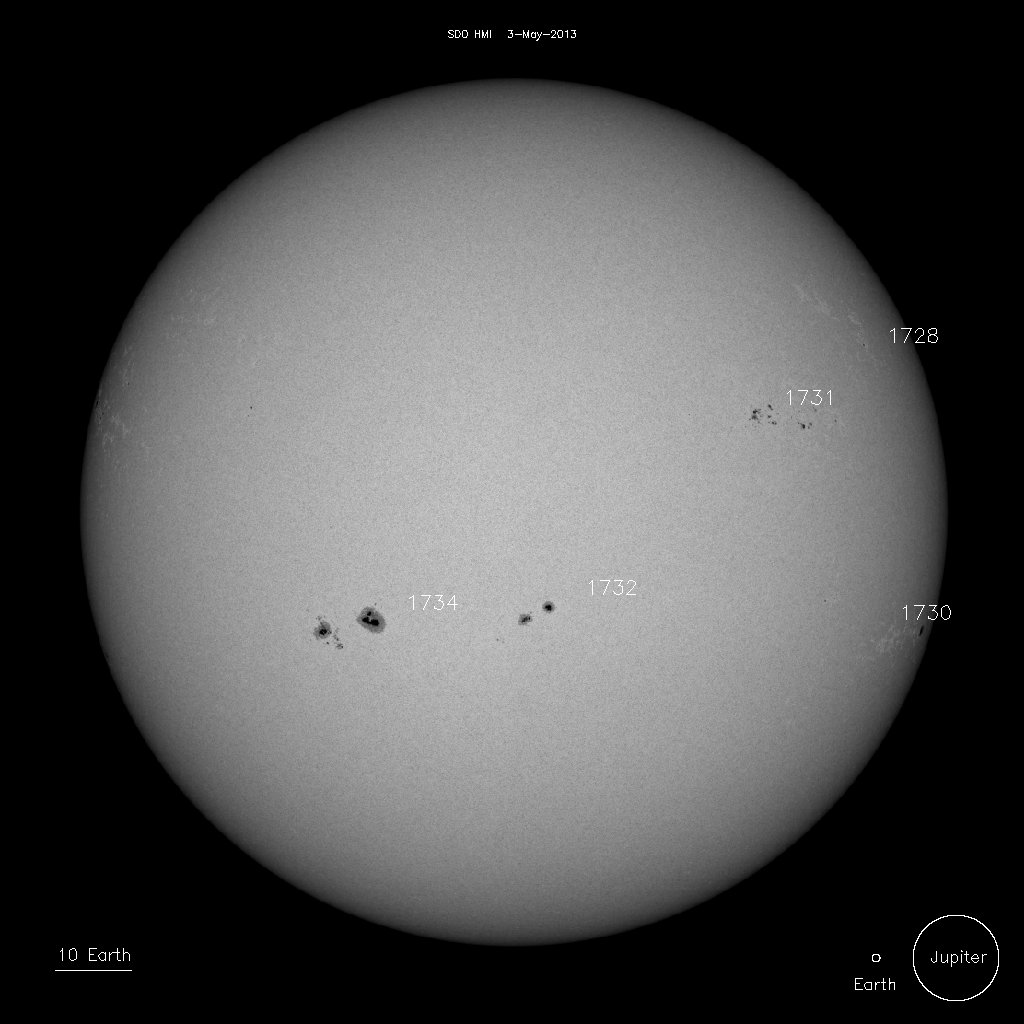Two M-class solar flares in a row – M1.3 followed by strong M5.7

A long duration, moderate, solar flare reaching M1.3 peaked at 16:53 UTC on May 3, 2013. The source of the event was Region 1731 still classified as Beta-Gamma-Delta and capable of more strong eruptions. This region has rotated out of the Sun’s central disk area toward western limb.
Before that event ended an impulsive and strong M5.7 solar flare erupted and peaked at 17:32 UTC. The source is probably old Region 1719 located on the Sun’s eastern limb. A Type II radio emission was associated with the event which typically indicates Coronal Mass Ejection (CME) . If CME was generated it should not be Earth directed.
NOAA SWPC forecasters estimate 30% chance for M-class solar flare, and 5% for an X-class today.

Space Weather Message Code: ALTXMF
Serial Number: 186
Issue Time: 2013 May 03 1732 UTC
ALERT: X-Ray Flux exceeded M5
Threshold Reached: 2013 May 03 1729 UTC
NOAA Scale: R2 – Moderate
Potential Impacts: Area of impact centered on sub-solar point on the sunlit side of Earth. Extent of blackout of HF (high frequency) radio communication dependent upon current X-ray Flux intensity.
***
Space Weather Message Code: ALTTP2
Serial Number: 849
Issue Time: 2013 May 03 1819 UTC
ALERT: Type II Radio Emission
Begin Time: 2013 May 03 1745 UTC
Estimated Velocity: 1297 km/s
Description: Type II emissions occur in association with eruptions on the sun and typically indicate a coronal mass ejection is associated with a flare event.
***

Sunspots
There are currently 5 active sunspot regions on the disk. Region 1731 maintains its Beta-Gamma-Delta magnetic field configuration but is now rotating toward western limb. Other than that, regions 1732 and 1734, located at the center of the disk, have Beta classified magnetic field. Regions 1728 and 1730, located on the west limb have Alpha and Beta magnetic field, respectively.

Featured image: Courtesy of NASA/SDO and the AIA, EVE, and HMI science teams.

Commenting rules and guidelines
We value the thoughts and opinions of our readers and welcome healthy discussions on our website. In order to maintain a respectful and positive community, we ask that all commenters follow these rules:
We reserve the right to remove any comments that violate these rules. By commenting on our website, you agree to abide by these guidelines. Thank you for helping to create a positive and welcoming environment for all.